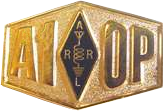|
This page contains a short history of my career as a Ham Radio Operator
Please note that photographs on this page are linked to a larger, high-resolution,
image. Smaller images are displayed here to enable faster loading. Clicking on any
image will result in a high-resolution image opening in a separate browser window.
I have been a licensed Ham Radio operator since the mid 1960's. However, I have not been an
active operator during that entire period of time.

First licensed in 1965, I started out as WN2RTB in Auburn, New York, and spent my Novice
days on 80M CW (Morse code). Within 3 months, I had practiced enough and passed the General
Class License exam with a 13-wpm Morse code speed. With the new General Class license, the
callsign changed to WB2RTB. I played around with both AM and CW modes until leaving home to
join the US Navy in 1966.
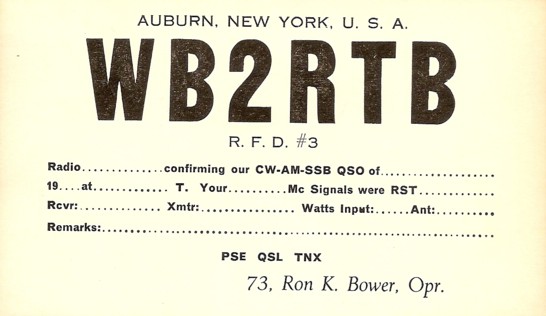
In the Navy, I spent a full year at Great Lakes Training Center in North Chicago, Illinois.
During the time I was attending Electronics Technician "A" School, I spent some time operating
and working on the Command's Ham Radio Club Station - K9NBH (thanks to K1PUB for reminding me
of the Club's callsign).
I was entirely inactive from late 1967 until 1973 as I spent some time at oversees duty
stations, settled down, and got married. In 1973, I was stationed in Hawaii and upgraded to
an Amateur Extra Class license - changing my callsign to KH6IAR. At that time, an Amateur Extra
Class exam included a 20-wpm Morse code exam and required 1 minute of solid copy out of a 5
minute test period. I must be honest in stating that the 20 wpm code test was very hard for me
and I was very lucky to have passed it on the first attempt. To this day, 20 wpm remains an
upper limit of my Morse code skills.
I purchased a Yaesu FT-101 from Honolulu Radio and was active on 20M CW and USB as KH6IAR
from Waialua, Hawaii. I put a 20M dipole on top of our duplex apartment and was on the air. As
an active participant in the Pacific Inter-Island Net, I placed many phone patches for people
calling from Guam, Saipan, Kwajalein, Eniwetoc, Palau, and other exotic Pacific Islands to
family and friends in Hawaii.
Following my 4 year tour in Hawaii, I was stationed in San Diego, California, from 1974 to
1976. In San Diego, I purchased a Swan TB3HA 3-element tri-band beam and mounted it atop a
10-foot mast on top of our rented duplex home. I was a full-time student in San Diego and did
not have a lot of time to dedicate to Ham Radio, but did manage to get on the air whenever
possible. Finishing my schooling in San Diego in 1976, I was transferred to the Naval
Communications Station in Guam.
I operated from Guam from 1977 to 1981 using the Swan TB3HA tri-band 3-element Yagi beam
mounted atop a 30-foot aluminum tower. Guam was a fun location for Ham Radio with plenty of
activity from Japan stations and "pile ups" from US and European stations. While stationed on
Guam, I had a chance to visit Japan and purchased a Yaesu FL-2100B Linear Amplifier from a
Ham Radio store in Tokyo.
It was during my time on Guam that I first got involved in VHF Ham Radio and purchased my
first 2M Transceiver. We had two 2M repeaters on Guam: one on 16/76, the other on 22/82. I got
involved with the 16/76 repeater and had an opportunity to rebuild the duplexer - a set of 6
resonant cavities. It was also toward the end of my tour, that I got into personal computing
with a Radio Shack TRS-80 and immediately started looking at ways to combine the personal
computer with the Ham Radio Hobby.
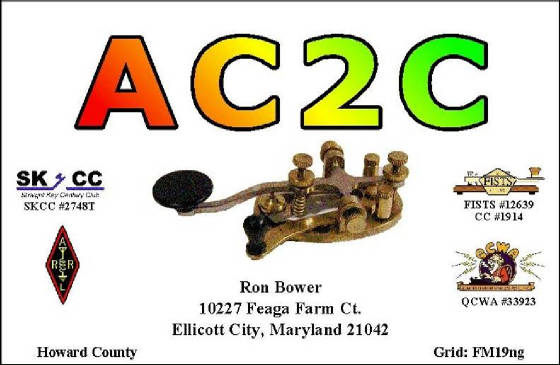
In 1978, the FCC announced a new callsign scheme for Amateur Extra Class licenses and I had to
make a fairly quick decision. First, would I apply for a new callsign and, if so, then what call
area to request. The first part seemed fairly simple, as their was no real reason to hold on to
the Hawaii-based KH6IAR callsign. So, the real question was what call area to request. Since my
permanent home of record was still New York, and I really had no idea where I would end up at
the end of my Navy career, I requested a new Extra-Class Callsign from the two call area. As a
result, my callsign changed from KH6IAR to AC2C. AC2C is a non-vanity callsign but goes well with
a 20-year Navy career.
The last five years of my 20-year Navy career were spent in Homestead, Florida. I had my Yaesu
FT-101 on my desk and a dipole on the roof, but operated very little. Instead, I was preparing to
retire from the Navy by working after hours to get a B.S. in Computer Science as a night student
at Florida International University (FIU).
I retired from the Navy in 1986 and relocated to Ellicott City, Maryland, working as a
contractor to the Department of Defense. I went back to night school at George Washington
University and completed my M.S. in Computer Science in 1992. Most of my time was committed
to making a second career, climbing the Corporate Ladder, and preparing for full retirement. My
Ham Radio operating was the minimum required to keep my license active and renewed each cycle.
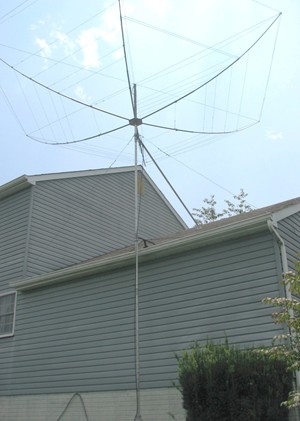
I picked 2006 as the year to return to the hobby. I started with the purchase of a Yaesu
FT-60R dual-band HT that got me on the local repeaters and helped me get acquianted with some
of the local Ham Radio operators. A bit later, I purchased an Icom IC-208H dual-band Transceiver
along with a Diamond 40-Amp Power Supply and a Diamond dual-Band VHF antenna. The next step was
to look for a good, reliable HF antenna solution.
I looked at some options for erecting my 30-foot aluminum tower, but did not feel ready to
fight with the local Government and Homeowner's association. Although I do not have severe
limiting covenant restrictions, I also did not want to bring undue attention to myself. So, I
looked at various options for stringing dipoles and looked at some commercially available beam
antennas. It was during that search for antennas that I came across discussions regarding the
Hex Beam.
I joined a Hex Beam Yahoo! Users Group and got some excellent information from a few websites
and decided to build my own Hex Beam. The first antenna was completed in June of 2006 and was
placed atop a 20-foot mast from the local Radio Shack store. With the Hex Beam in the air, it was
time to pick up a suitable HF Transceiver.
Update Note: I am currently on my third Hex Beam - one built and sold by Leo
Shoemaker, K4KIO. The homemade Hex Beams worked well, but the wooden bases did not hold up to the
weather.
In July, 2006, I took a trip to the Ham Radio Outlet store in New Castle, Delaware, and
purchased an Icom IC-756 Pro III and a Vibroplex Iambic Deluxe set of paddles for use with the
IC-756 internal CW Keyer. My very first contact with the new Icom IC-756 was on 20M CW using the
iambic paddles. I was immediately hooked and glad to be back on the air.
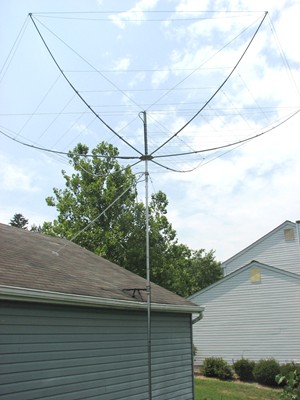
As of now, I have four antennas to choose from, depending on the band and propogation
conditions:
-
The HexBeam is the main workhorse antenna for the upper HF Bands. It covers
20M thru 6M with 6 sets of wire elements and is mounted off the back side of the garage on
a homemade mini-tower that houses a rotator that turns the entire mast.
-
There is also a Hustler 5BTV Trap Vertical that tunes 80M, 40M, 20M, 15M, and 10M. The
vertical antenna has a set of 16 radials - one 10' long, one 15' long, ten 25' long, and
four 50' long radials. Since adding the radials, the antenna has become very usable and has
contributed several good QSOs to the logbook.
-
There is also a 110 foot long-wire that is tuned through a random wire tuner. The antenna
is the workhorse for 160M through 40M, but also tunes all bands 160M through 6M. The tuner
is ground-mounted and is connected to a grounding system consisting of a set of four 8-foot
long copper-clad rods driven into solid ground.
-
A most recent addition is a dipole for the 6 meter band.
My favorite and primary operating mode continues to be CW (Morse code) but I occassionally
operate Single Sideband, PSK-31, and have experimented with FM, RTTY, and Slow-Scan TV.
As an active CW enthusiast I am a member of the following groups:
|

